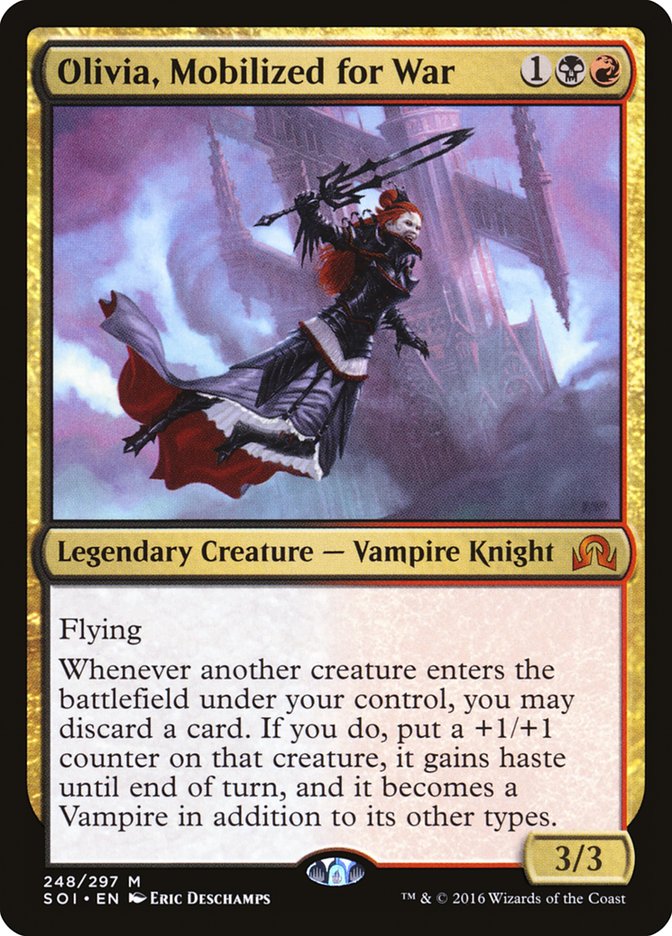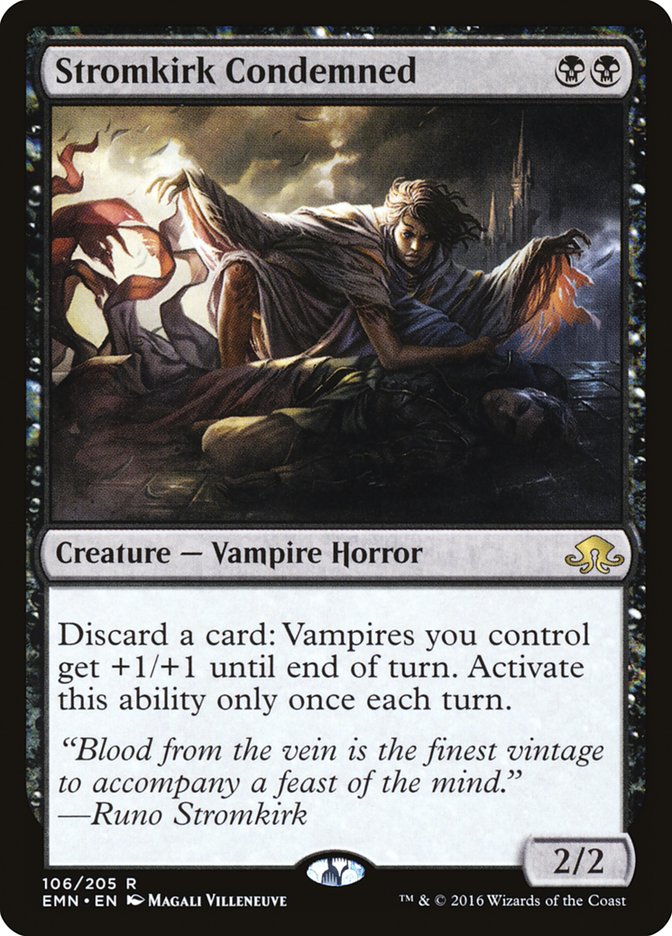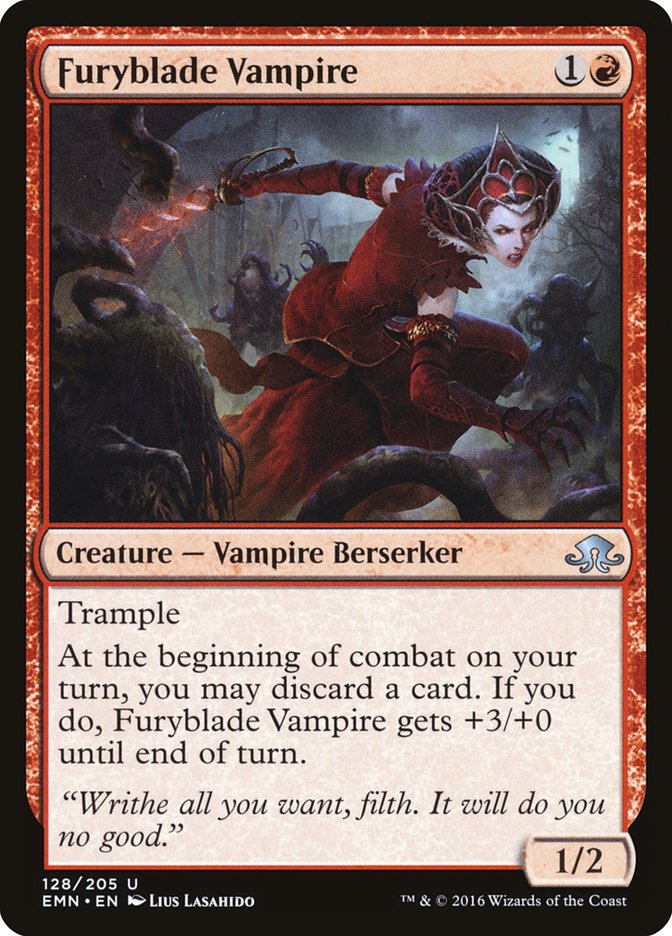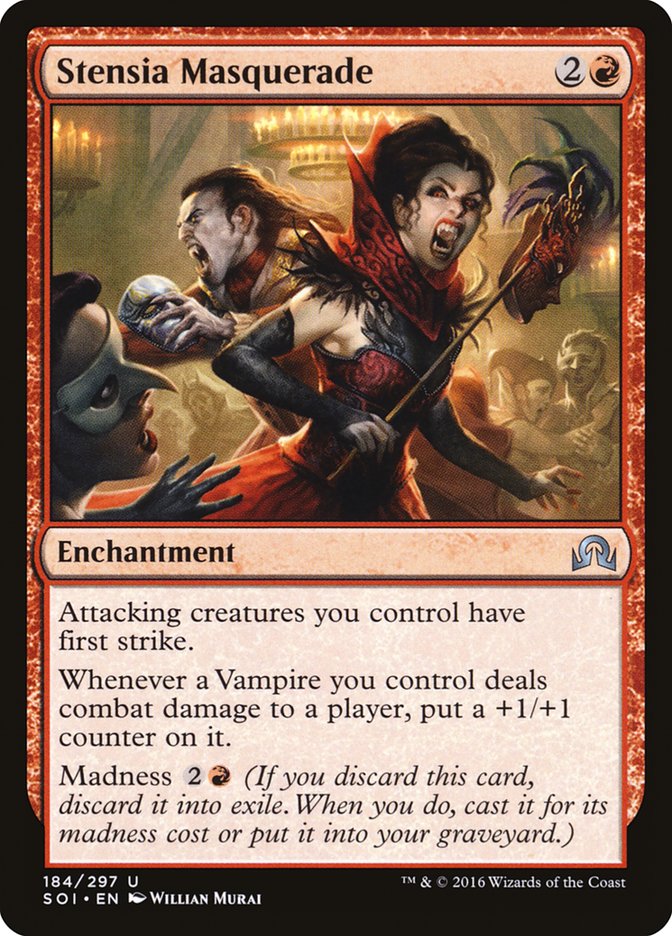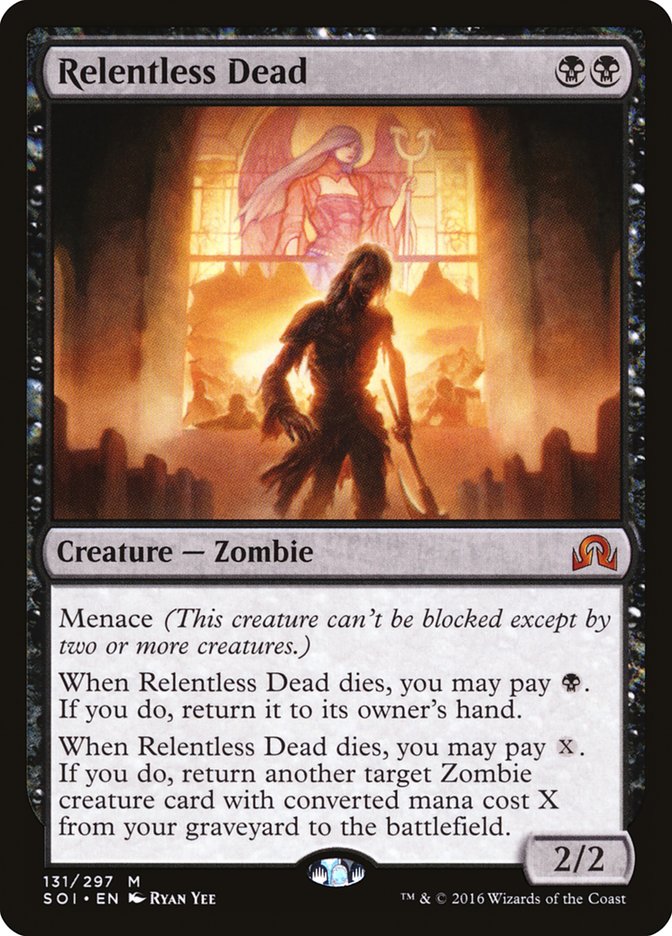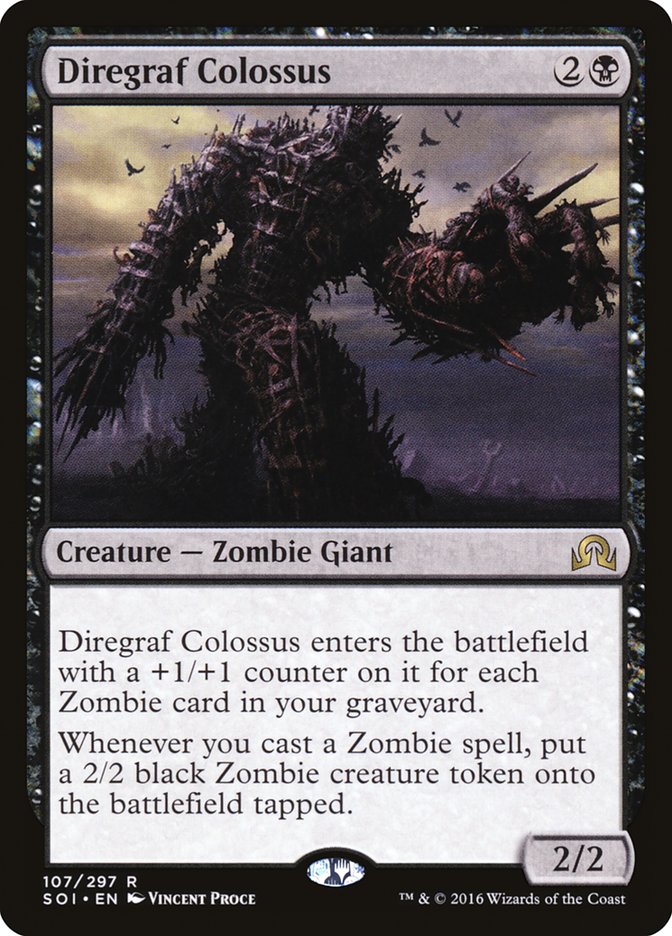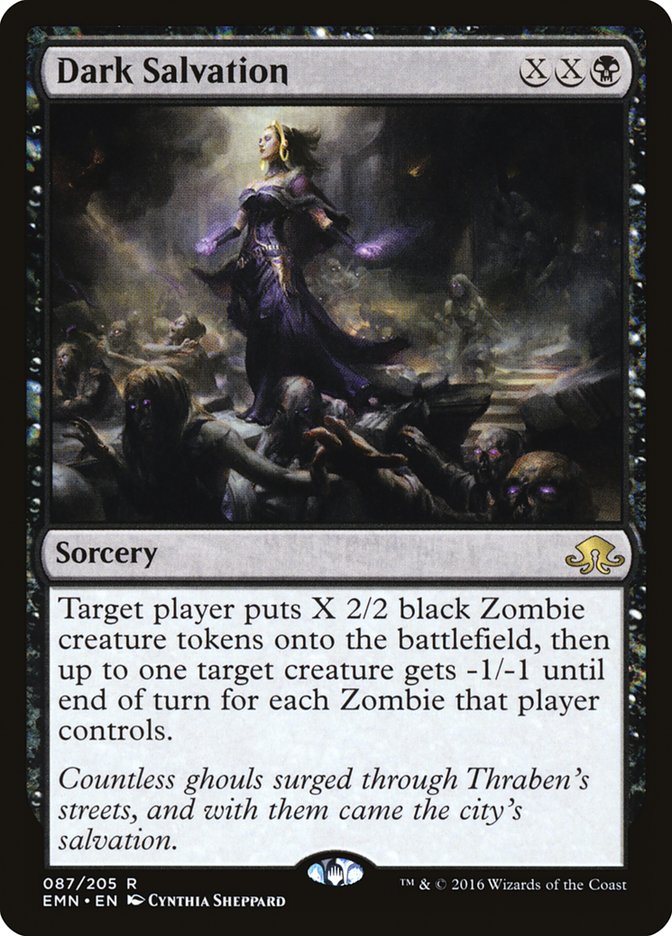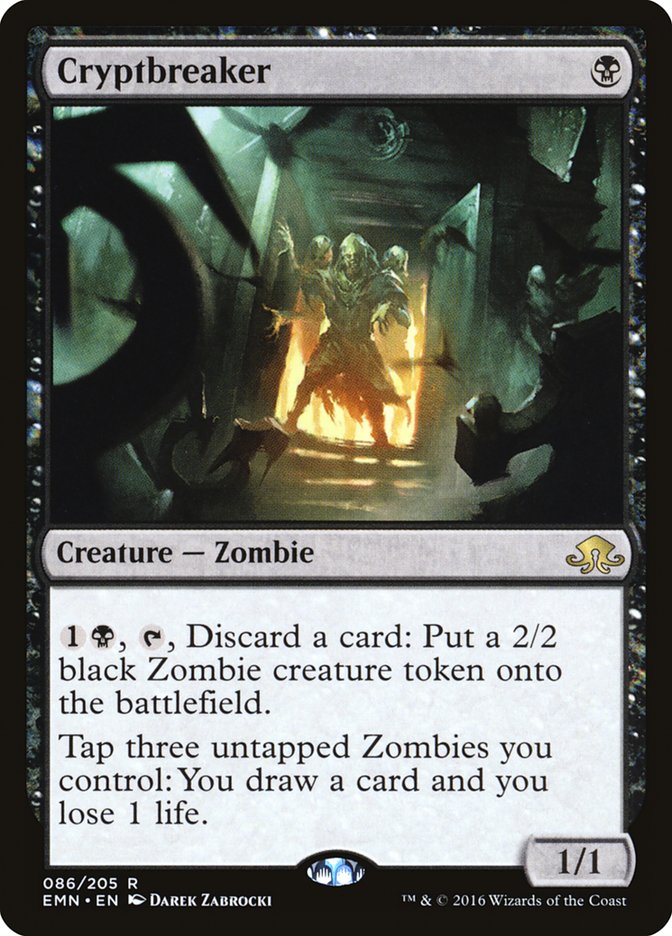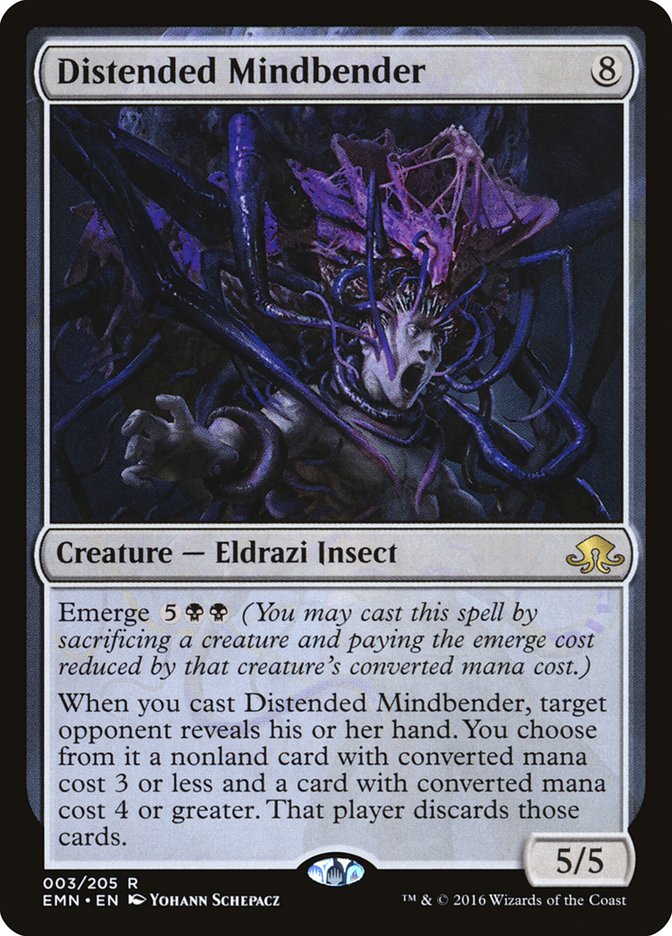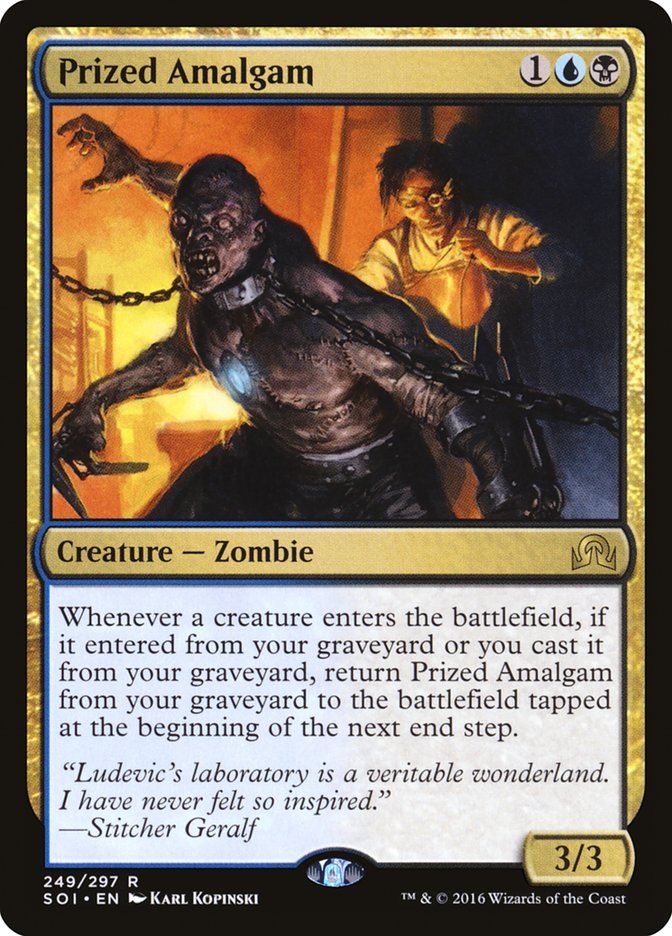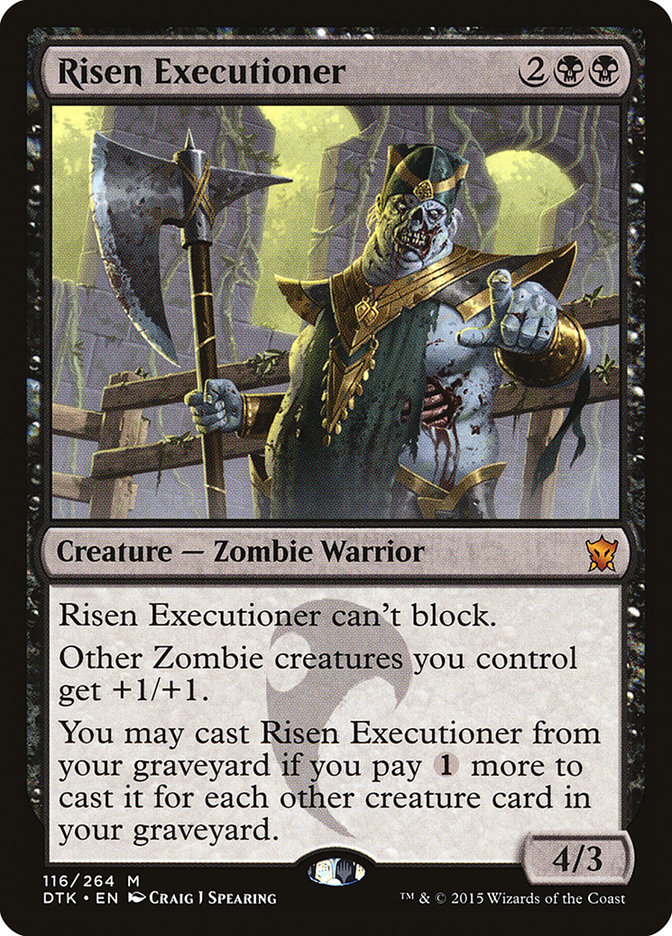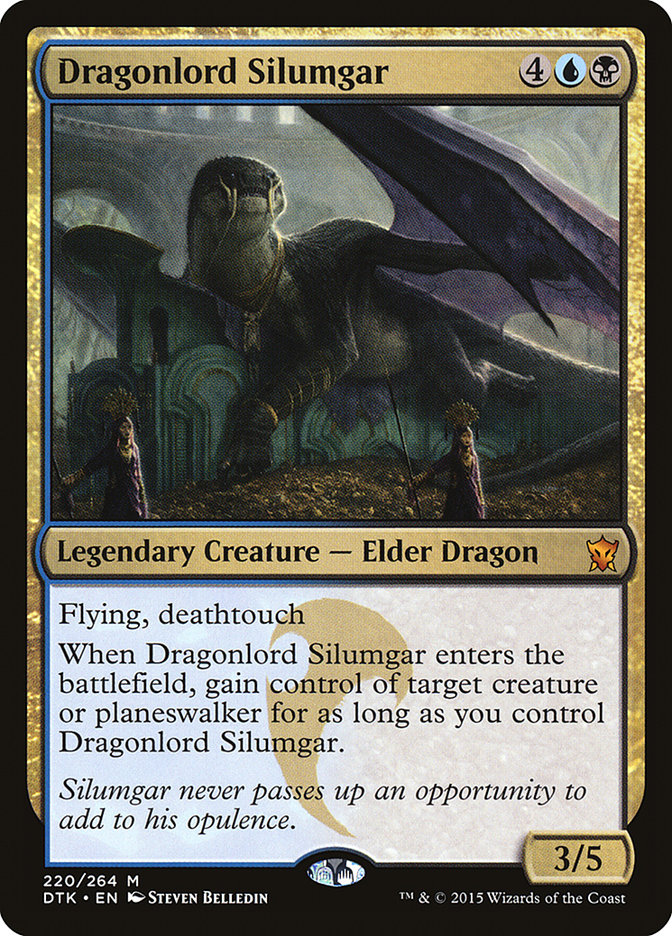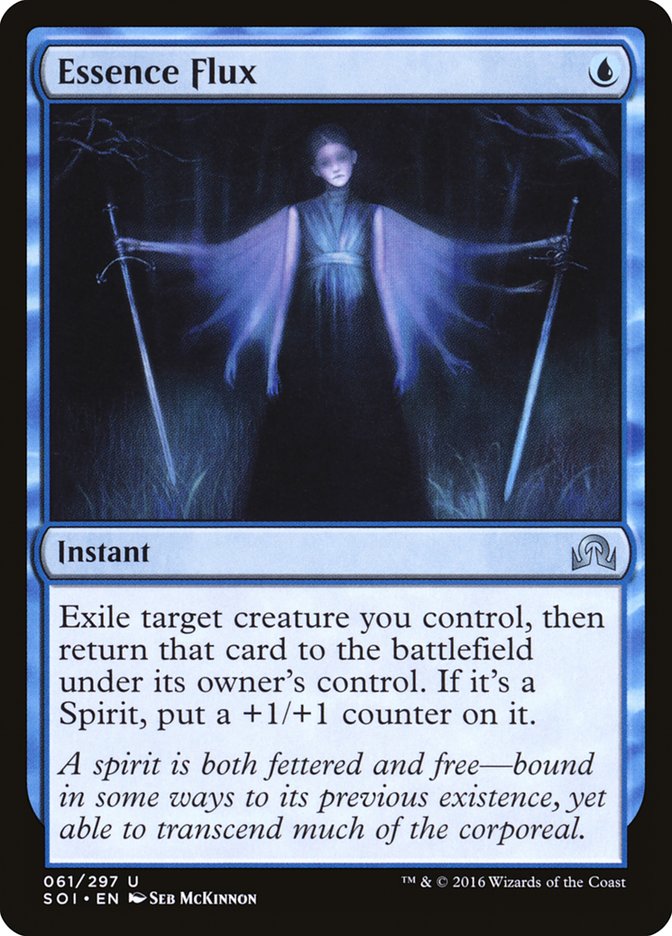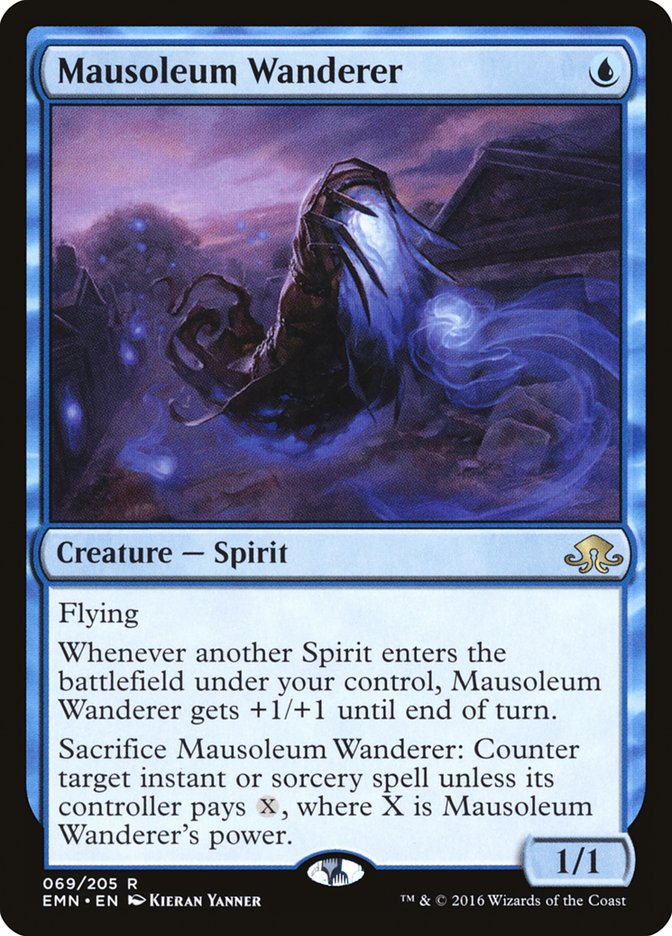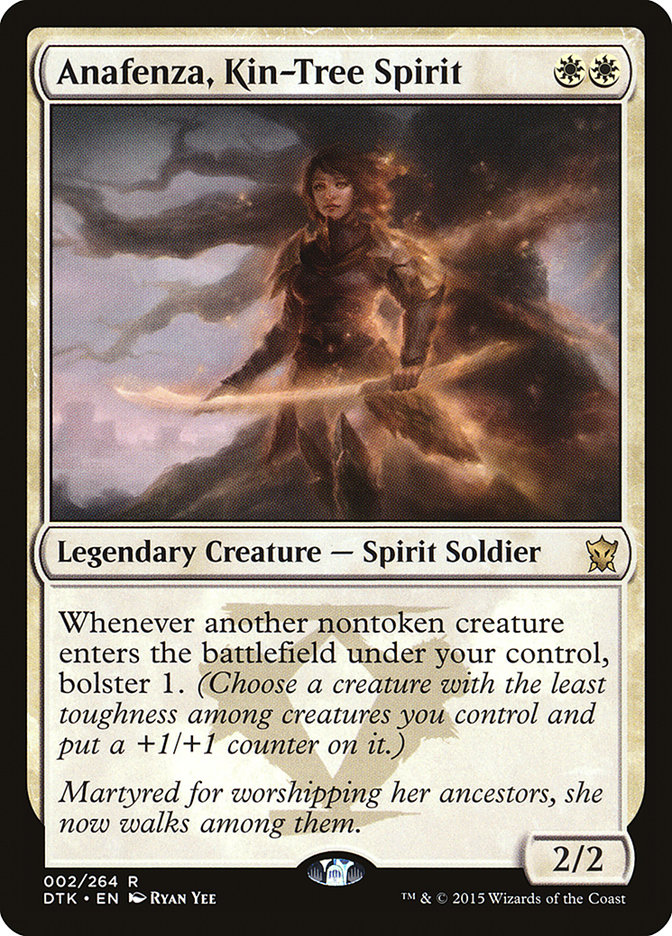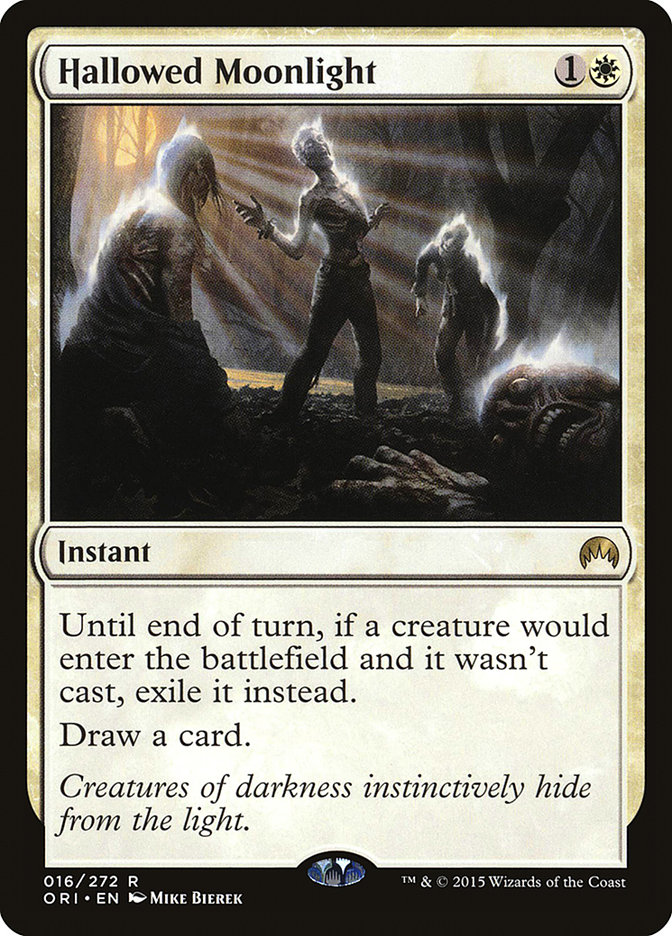With the SCG Tour® stopping in Worcester (pronounced Wuss-Ter) and my mother’s birthday shortly afterward, I took the last week to be a good son and visit home for the first time since moving to Roanoke last December. Suffice it to say that the tournament did not go well, and since I have Limited time in Connecticut, I decided against staying to play a Classic on Sunday in a lame-duck Standard format in favor of sneaking in a little more time at home.
Between seeing old friends, eating unhealthy amounts of Italian ice, and wracking my brain trying to figure out how my parents manage to live in 2016 without WiFi (please send help!), I’ve been able to sit down with the complete Eldritch Moon spoiler and start looking ahead to the next iteration of Standard.
The plane of Innistrad has always been a fan favorite because the horror themes resonate so well with Magic’s audience. A world of Werewolves, Spirits, Zombies, and Vampires is exciting in and of itself, and now that world has been invaded by a horde of Lovecraftian Cthulhu-esque monsters for the ultimate in horror crossovers. Part of Innistrad’s charm is how vividly these tribes are captured in the cards, allowing the rich flavor of the plane and its story to come through clearly in the gameplay.
But the thing is, with the exception of Humans, we haven’t seen the tribes coalesce into an entire archetype. Individual cards have been powerful enough to break through in Standard, but nothing like the Lorwyn era where we saw Faeries, Merfolk, and Elves all competing at the top tables.
Tribal decks are always replete with synergies that make building and playing with them interesting even beyond the flavor points. So without further ado, here are my ideas for how the lesser-heralded tribes of Innistrad can compete against the Humans and Eldrazi, along with the rest of Standard’s top decks.
Vampires
When Shadows over Innistrad was spoiled, it seemed like the tools were there for an madness-laden aggressive archetype. I immediately built the deck for a VersusVideo and the results were… disappointing. The madness synergies merely took some of the cards in the deck from completely unplayable to mediocre, and when things did not come together smoothly, it felt like you were playing a Draft deck in Constructed–not a good place to be.
The deck did not have a true identity on a strategic level since it wasn’t particularly fast or powerful. In our testing in Roanoke, there was eventually a version of the deck that used Heir of Falkenrath; Olivia, Mobilized for War; and Thunderbreak Regent to create a sizable flying force that could race the opponent with a combination of burn spells and removal. I was initially looking for a couple more pieces for that deck in Eldritch Moon, but Olivia’s Dragoon wasn’t exactly what I had in mind.
Instead, I was intrigued by a card which would necessitate taking Vampires in a different direction: Stromkirk Condemned.
Rather than going tall with big, flying, haste creatures, Stromkirk Condemned rewards us for going wide and loading up on a pile of cheap creatures, at which point each activation of its ability can deal as much damage as possible. We still have the ability to support appropriate madness cards, which allows us to supplement the hyper-aggressive gameplan with enough reach to close the game once our small creatures are ineffectual in combat.
This new philosophy leads me to the following list:
Creatures (26)
- 4 Incorrigible Youths
- 4 Falkenrath Gorger
- 2 Indulgent Aristocrat
- 4 Insolent Neonate
- 4 Stromkirk Condemned
- 4 Vampire Cutthroat
- 4 Furyblade Vampire
Lands (15)
Spells (19)

With fourteen one-drops, we can consistently turn Stromkirk Condemned into a significant threat by turn 3. They may not seem like the most formidable bunch, but they all pull their weight. Vampire Cutthroat and Insolent Neonate have evasion to deal the last few points to get your opponent into burn range and Indulgent Aristocrat gives you another Anthem effect that can help blunt opposing removal spells.
Furyblade Vampire was my choice over Heir of Falkenrath since trample is still a form of evasion, there aren’t any other fliers to support Heir, and Furyblade Vampire is a more consistent madness enabler. Curving Furyblade Vampire into Incorrigible Youths allows for an attack of eight or more damage on turn 3, which, along with the explosive Stromkirk Condemned draws, should allow for frequent turn 4 kills, important for getting under Languish.
Fiery Temper, Alms of the Vein, and Incendiary Flow let you kill early blockers like Reflector Mage and Sylvan Advocate so your 1/1s and 2/2s can keep attacking, but all of them can go upstairs, meaning you can finish your opponent from six or more life with ease. Alms of the Vein also combines with the six lifelink creatures to give you plenty of ways to race other aggressive decks.
The sideboard contains mostly standard options for control, ramp, and midrange decks, with Stensia Masquerade being the only outlier. The card offers a unique effect against other decks that will go wide and force your small creatures to stand up in combat. With Masquerade on the battlefield, you can force situations where your opponent’s blocks are no better than trades and any creatures that do get through quickly grow out of control. It’s particularly good with Furyblade Vampire, and the fact that it has madness allows you to use it as a combat trick.
My one issue with the deck is its mana. Having eight red one-drops and a BB two-drop is going to cause some issues, and this isn’t a deck that can afford to stumble too often. The bright spot here is that Stromkirk Condemned is often going to be played on turn 3, at which point you can discard to it and cast a one-mana madness card. This allows you to achieve BB on turn 3 with one of each basic and a Smoldering Marsh. Without other options it will be tough to shift the deck toward a single color with a light splash, so if there is anything that will hold this deck back, it will be the manabase.
It may not be what I had planned for the Vampire tribe, but I’m a sucker for a good beatdown.
Zombies
Speaking of beatdowns, the combination of Relentless Dead and Diregraf Colossus certainly pointed toward an aggressive shell for the Zombie tribe. The previous Innistrad saw a very aggressive Zombie deck led by Gravecrawler and Geralf’s Messenger that also gave the deck a level of resilience that brought it from fringe archetype to top contender, even against the (in)famous U/W Delver deck.
The new iteration of Zombies appears to be even more graveyard-centric with the printing of Prized Amalgam and now Geralf and Gisa. The result is a less aggressive deck that can often play straight through all but the most powerful disruption but can still punish stumbling opponents and slower, untuned decks. The result is as follows:
Creatures (24)
- 4 Relentless Dead
- 4 Diregraf Colossus
- 4 Prized Amalgam
- 1 Stitchwing Skaab
- 4 Gisa and Geralf
- 1 Distended Mindbender
- 2 Wailing Ghoul
- 4 Cryptbreaker
Planeswalkers (4)
Lands (22)
Spells (10)
Sideboard

Liliana, the Last Hope; Gisa and Geralf; and to a lesser extent Wailing Ghoul fill the graveyard, at which point you can rebuild your battlefield almost instantly. The curve is low enough that you can start drawing cards with Cryptbreaker as early as turn 3, and Diregraf Colossus represents a very fast clock, especially in multiples.
The real draw to this deck is Dark Salvation. The curve of Cryptbreaker, activate, Dark Salvation your Sylvan Advocate and draw a card requires only two specific cards to leave you with three creatures on the battlefield and up two cards, more if you discard a card like Prized Amalgam or Drownyard Temple that can be rebought from the graveyard.
One worry for a deck as filled with 2/2s as this one is being brick-walled by the many 2/3s in the format. You don’t want to use your precious few removal spells on one of those creatures and be unprepared for something like Archangel Avacyn. Liliana, the Last Hope lets you effectively blunt those creatures’ ability to stabilize the battlefield while also contributing to the graveyard-value plan or even threatening to win the game by itself with an ultimate.
The single Distended Mindbender could prove to be unnecessary or foolish in its solitude. It’s an incredibly powerful card that is enabled perfectly by Prized Amalgam. Being able to strip your opponent of their most powerful card is excellent insurance against decks that can go over the top of you and thereby ignore your otherwise overwhelming card advantage.
The other singleton creature, Stitchwing Skaab, is there to give you some way to rebuild solely from the graveyard. This gives the deck a degree of inevitability that it needs in attrition games, but you’d much prefer to mill it than draw and cast it naturally, and you don’t need to see it early, making it the perfect singleton role-player.
Searching for cards to play alongside Cryptbreaker and Dark Salvation, I was also intrigued by From Under the Floorboards, which immediately turns both cards into powerhouses. This led me into a more controlling direction:
Creatures (11)
Planeswalkers (5)
Lands (22)
Spells (22)
- 4 Island
- 2 Grasp of Darkness
- 1 Ultimate Price
- 3 Ruinous Path
- 4 From Under the Floorboards
- 3 Dark Salvation
- 4 Take Inventory
- 1 Oath of Liliana
Sideboard

This deck may not have Relentless Dead and Prized Amalgam, but it still uses the graveyard well. Jace, Vryn’s Prodigy makes an appearance to stock the graveyard with the early copies of Take Inventory or a Relentless Dead to cast later while also enabling madness on From Under the Floorboards.
Dark Salvation and Liliana, the Last Hope are still around to accrue value, especially if you use Liliana to return Jace. This deck may have fewer targets for the Raise Dead effect, but they are all so high-impact that the -2 will do good work. I do have some reservations about Dark Salvation relying on Cryptbreaker and From Under the Floorboards to function as a removal spell, so I could see three being too many.
Risen Executioner may seem awkward in a controlling deck, but turning all of your Zombies into 3/3s makes them quite formidable against the most common creatures in Standard, and this deck plays so few creatures that it is going to be easy to cast from the graveyard. The body itself gives the deck the capability of pressuring planeswalkers or punishing a stumbling opponent, so you aren’t pigeonholed into playing a long game.
Cutting creatures also allows this version of the deck to effectively sideboard Languish against aggressive decks, and curving it into From Under the Floorboards should end a great many games against those filthy Humans with their beating hearts and delicious brains.
Dragonlord Silumgar and Welcome to the Fold are excellent against opposing midrange decks, and the increased land count of this deck allows us to play multiple copies of both with relative ease.
Zombies have historically been an aggressive tribe, but they’re always pictured as an unstoppable, relentless horde, and both of these lists capture that idea beautifully. Come a few weeks from now, no brains will be safe.
Spirits
This is the tribe that has received the most press, as Spell Queller is among the most hyped cards in the set. Blue-based Skies decks, splashing either white or red, were fringe players at the end of last season, so it stands to reason that another set of powerful Spirits could elevate those decks to contender status.
Spell Queller is an obviously powerful card that puts you significantly ahead on tempo. When protected with Rattlechains and Selfless Spirit, you are going to be able to reliably maintain that edge, at which point the flash nature of the deck becomes incredibly powerful, as your opponent is forced to act first and you can react appropriately.
I tried to stress that flash element, limiting the number of sorcery-speed cards where possible and only playing sorcery-speed cards that are cheap enough to not interfere with the reactive gameplan.
Creatures (25)
- 1 Anafenza, Kin-Tree Spirit
- 4 Reflector Mage
- 4 Bygone Bishop
- 2 Archangel Avacyn
- 4 Rattlechains
- 4 Spell Queller
- 2 Selfless Spirit
- 4 Mausoleum Wanderer
Lands (8)
Spells (27)

Spell Queller may be the star attraction, but I am most excited by Mausoleum Wanderer. Judge’s Familiar was always disrespected in its time, but the scoreboard says “two-time Pro Tour Champion.” Mausoleum Wanderer is less a Force Spike on a stick and more a Flusterstorm, since you can cast your flash creatures in response to a spell to increase the Wanderer’s tax. Your opponents are going to be hard-pressed to resolve any of their removal spells on curve, leaving them to try to race your flying attack.
Their attempts to race will be swiftly quashed by the combination of Reflector Mage, Archangel Avacyn, and Ojutai’s Command. Notably, Mausoleum Wanderer and Selfless Spirit give you easy ways to trigger Avacyn when necessary, and Selfless Spirit can ensure that the trigger does nothing to your side of the battlefield.
Essence Flux is a great trick with Reflector Mage, Rattlechains, and Spell Queller, and that kind of versatility at the low cost of one mana is invaluable for a tempo-based deck like this. That being said, the card advantage your tricks can generate, when paired with Bygone Bishop, gives this deck a reasonable long-game plan if your opponent is able to maintain parity early on.
Anafenza, Kin-Tree Spirit may look out of place, but the bolster plays nicely with the cheap fliers, giving you an easy way to play defense while also adding to the pressure on your opponent. The Anthem effect should also be effective in mirrors, where my lack of Thunderclap Wyvern may be an issue. As a weak card by itself and having a steep cost, I don’t think Wyvern will be effective unless this archetype becomes very popular, but it could still be an effective sideboard card in the Skies mirrors.
The sideboard all-star for this deck is Hallowed Moonlight, since you are able to hold up mana so frequently that your opponent will be unable to avoid playing into it. Hallowed Moonlight is obviously great against Collected Company but will get even better if Prized Amalgam and similar Zombie cards also become popular.
Tricky aggressive decks are among my favorite to pilot and this deck offers so many options and synergies that playing against it is going to be a nightmare for most decks. That advantage, combined with the increased power level of the cards in the deck, leaves me unsurprised that Spirits is getting the hype it is.
All four of these decks feature Innistrad tribes at their best. They are all more than a mere collection of cards that share a type line and a new keyword in the rules text but complete decks with defined strategies and goals. Battle for Zendikar block has outshined Shadows over Innistrad to this point, which is to be expected when comparing two sets to one, but now that all the horrors of Innistrad have been unleashed, I expect a more balanced Standard format moving forward. And that means each tribe having the tools to compete.



